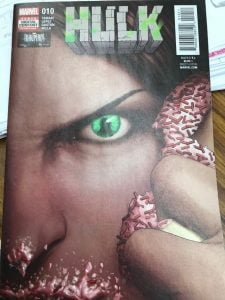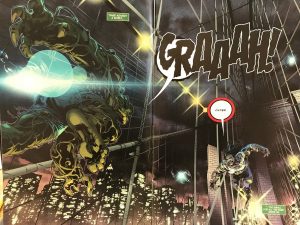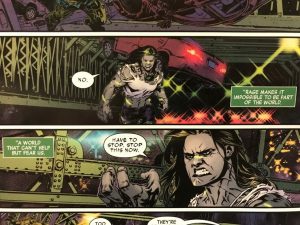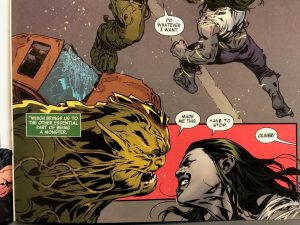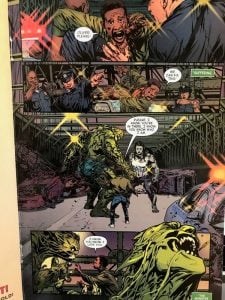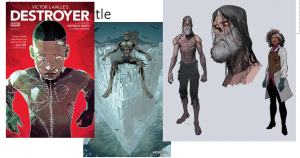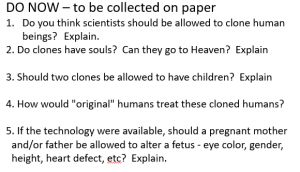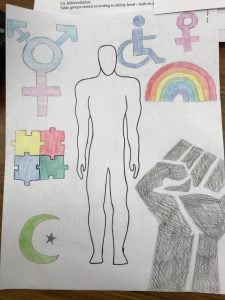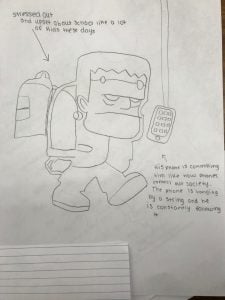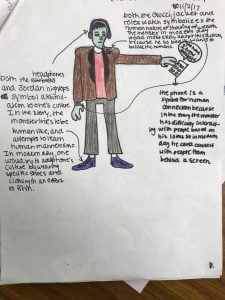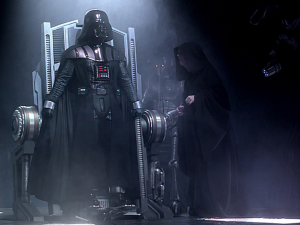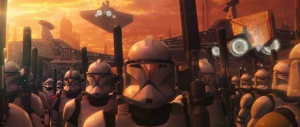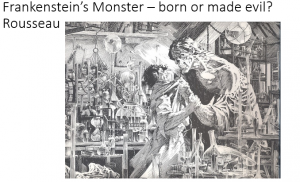I teach high school social studies and firmly believe in the importance of rigor and high expectations for myself and my students. We do a lot of analytical reading in writing in the course as I want my students to leave with the most important skill – being able to formulate an individual argument/opinion based on evidence and reason. That being said, I have come a long way from the teacher I was years ago when I was taught to never let the students see me smile until Christmas. I have managed to balance fun and being personal with being professional and challenging. I like to have fun in my class and to make students laugh everyday, and I can have this fun due to my class management and high expectations. This past week, however, I was struck by an event in my classroom with a grade of students who are showing many signs of anxiety and perfectionism as they chase points. We have had several discussions this year about the importance of learning and not focusing on points, that it is ok to fail as I do myself, etc. I thought we were making progress until I gave an assignment that, I thought, was fun and engaging. After I explained the assignment, I expected to see excitement and wonder in the eyes of my students and was disappointed when they began asking for the rubric, asking how many points it would be worth, and if I would tell them more about my expectations.
My classroom is full of wonder – posters of superheroes, WWII photos with stormtroopers photo shopped in, graphic novels and comic books galore, giant chairs to read in, and more toys that I can possibly explain away. Here I was, encouraging my students to have fun with an assignment and they simply could not let go of their anxiety to do so. I found out that they were reading Frankenstein in their Language Arts classes, and I wanted to make a humanities connection. I firmly believe that we need to study the time period and life of authors to better understand the influences on their writing. We happened to be starting the Industrial Revolution and so I was able to quickly put together a lesson that would infuse history and pop culture to not only engage my students, but also to allow them to have fun. I gave them a excerpt from Frankenstein and simply asked them to complete the story – in any way their imagination took them. It could be funny, sad, scary, – it just had to be a complete story. (and for the potential wiseasses like me, it could not be “and then I woke up.” The excerpt –
- “I started from my sleep with horror; a cold dew covered my forehead, my teeth chattered, and every limb became convulsed; when, by the dim and yellow light of the moon, as it forced its way through the window shutters, I beheld the wretch – the miserable monster whom I had created. He held up the curtain of the bed; and his opened eyes, if eyes they may be called, were fixed on me. His jaws opened, and he muttered some inarticulated sounds while a grin wrinkled his cheeks. He might have spoken, but I did not hear; one hand stretched out, seemingly to detain me.”
After the story was complete, the students were then to draw a representation about their story (to summarize – a key literary skill). These two parts of the assignment unfortunately caused a little bit of a panic. I can’t draw – will you take off points? Does it have to be colored in? How long does the story have to be? I don’t remember this part of the book, what if I get the story wrong? -These are amazing students who care very much about their education and grades and tend to “do school” very well. This reaction really made me take a step back to evaluate the entire educational process. How many tests do these students have to take over the course of the year? How much are their grades affected by these exams? Do we give out too many rubrics for assignments to strictly define the assignment parameters? How much freedom do we allow our students to explore and flex their imaginations? I know we all have curriculum to cover – but I also believe that we can make time for what is important and that it is a cop out to say – we can’t do that, there’s not enough time. So we talked about the assignment and I was finally able to convince them that I was not looking for a specific answer or drawing – that, yes, they were to have fun. I also shared with them some of my “drawings” and allowed them to giggle at my pathetic attempts to even make stick figures. The entire dynamic of the class changed and the students were the most engaged I had seen them this year. The rest of the session flew by and the students were disappointed when the bell rang. They were eager to finish their creations (see what I did there?) and to share with the class the next day.
I was being observed for the second part of this lesson and I was terrified that the students would not volunteer to share their stories or drawings. I had set aside time in the beginning of the class to do so and was afraid of the potential for dead space with a principal in the room. However, the students came in, sat down at their tables (we sit in groups of four as a collaborative education is the most effective) and began to share with each other without needing to be told to do so. The class was loud and I loved it. However, then I asked for students to either volunteer themselves or a partner to share with the whole class and then turned the floor back to them. I was so happy to see students eagerly encouraging others to volunteer their stories or drawings. Students stood up to share – one even came to the front of the class to read his story in a Shakespearean fashion as he pantomimed a sword fight between him and the monster. The students were constantly clapping for one another and it was awesome. Sometimes we laughed and other times we were hushed into awe by a story or drawing.
The last part of the last part of the assignment was to draw the creature as seen today. What does our society see as the creature? We talked about the importance of symbolism in drawings and specific evidence. Again, some were hysterical, some creepy, and some just were beyond words. Some drew about the need to wear designer clothes, the control of smartphones on their lives, LGTBQ+, Muslims, educated women, and so much more. As the students were talking in their groups on a second part of the assignment, I quickly scanned the collected drawings, took pictures, and put them onto a PowerPoint. Some students declined sharing their drawings with the class and this was my opportunity to show them off anyway – I took off their names and showed them to the class. Wow. The students were able to understand the dangers of making humans into “others” and how some in our society fear what they do not know/understand. For tenth graders to have such an amazingly mature insight into the world gives me great hope.
We also discussed the connection between Hulk and Frankenstein’s Monster in this amazing comic.
Also the amount of death that surrounded Mary Shelley in her life and how reanimation must have been on her mind. This has also been written about in the below comic where the scientist actually brings back her son –
This was the result of allowing students to use their imaginations to create and share as I took a step back. This then led us to a conversations about modern technology and the fears of new technology. The students and I discussed potential issues with cloning and cyborgs – we can, should we? Of course, we then made connections to Star Wars, the clone army, and the creation of Darth Vader. But more on that in another post.
https://www.youtube.com/watch?v=c6bEs3dxjPg – tell me this isn’t a homage to Frankenstein’s Monster from George Lucas!
Begun the Clone War has – https://www.youtube.com/watch?v=dylqDO4uEXc

